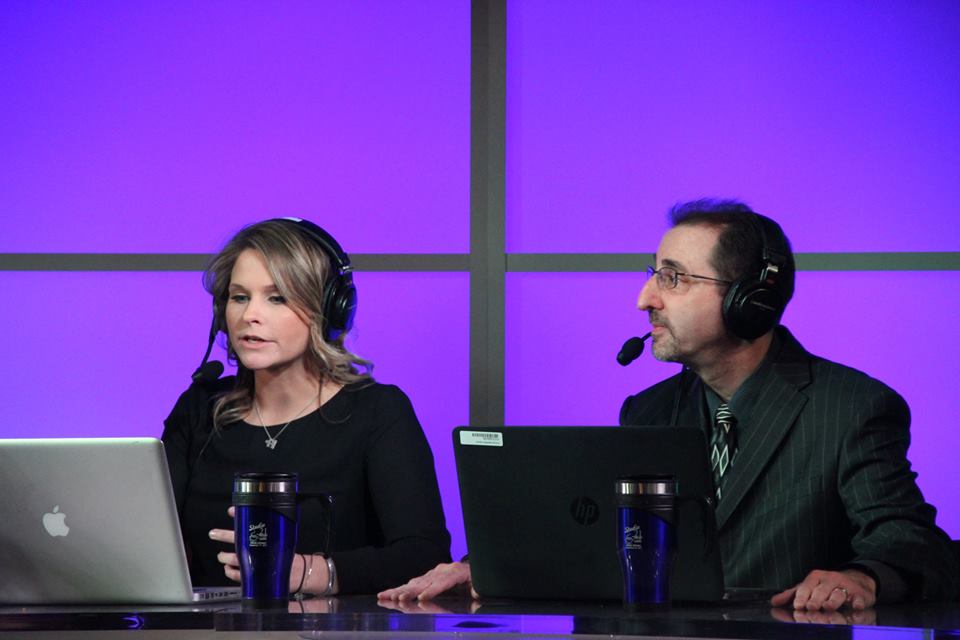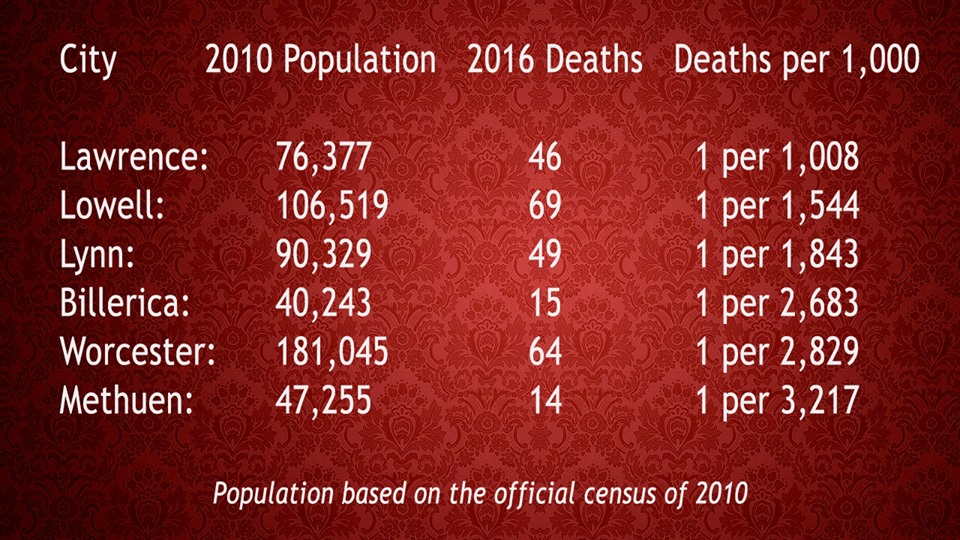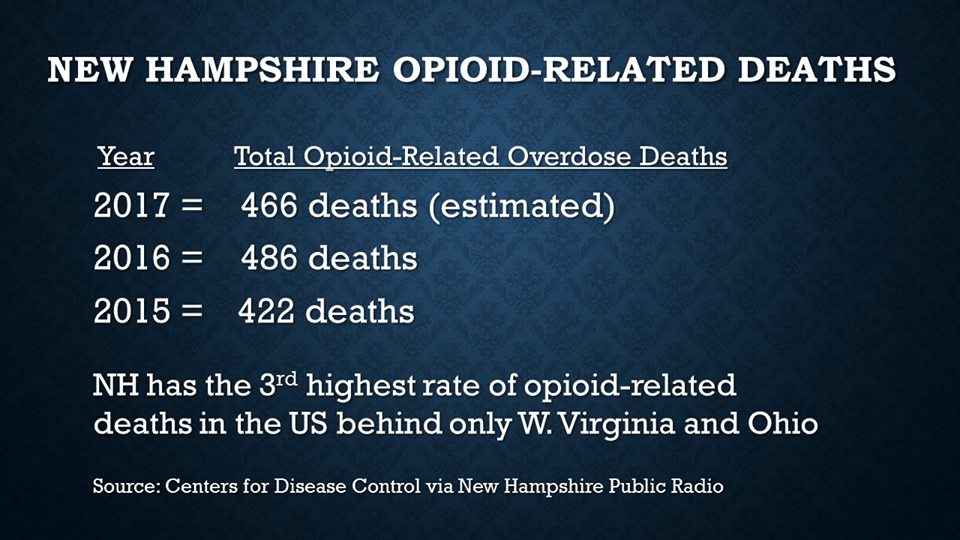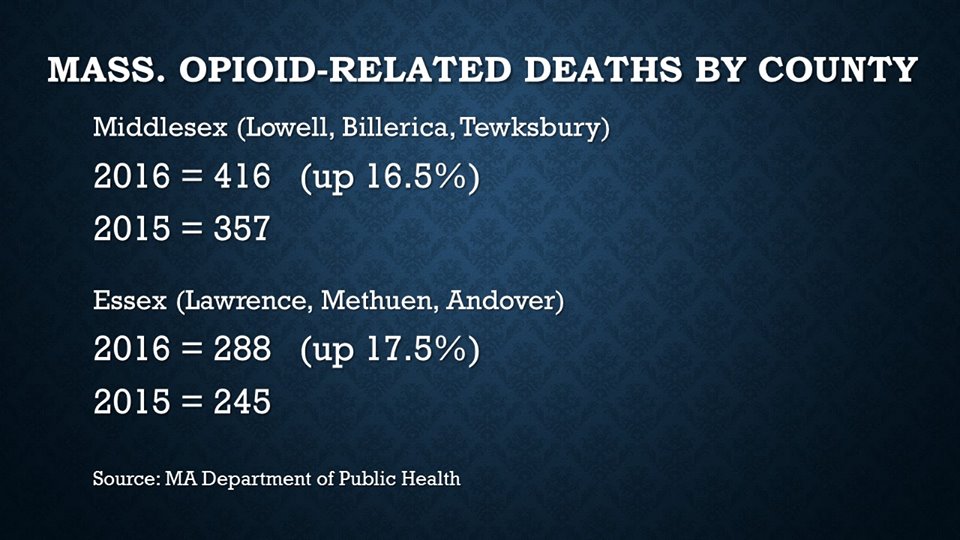
By: Ira Keltz and Quianna Roy
The Massachusetts Department of Public Health reports that in 2016 there were 2094 opioid-related overdose deaths in the Commonwealth, which was up a whopping 24% over 2015. In the first 9 months of 2017, there were 932 confirmed opioid-related overdose deaths and the DPH estimates that there will be an additional 491 to 582 deaths through the end of 2017. This DPH estimate of somewhere between 1400 and 1500 deaths is actually positive news in that we can expect to see a significant drop from last year’s total.
A new report from the Centers for Disease Control last week reveals NH has the third-highest rate of opioid-related deaths among all U.S. states, behind only West Virginia, and Ohio.
New Hampshire is expected to close out 2017, with 466 official overdose deaths, nearly 20 fewer than in 2016.
Breaking that down by counties, in New Hampshire; Hillsborough County (which covers Manchester and Nashua ) had 199 deaths in 2016 and 178 deaths in 2015.
Rockingham County, (which covers Salem NH, Portsmouth, and Derry) had 90 deaths in 2016, and 89 deaths in 2015.
In Massachusetts, Middlesex County, (which includes Lowell and Billerica) had 416 deaths in 2016, which is up from 357 deaths in 2015.
In Massachusetts, Essex County (which covers Lawrence, Haverhill and Methuen) had 288 fatal opioid overdose deaths in 2016, which was up from 245 confirmed deaths in 2015.
Overall the number of deaths from Opioids in the northeast are trending down slightly in 2017.
Police say they believe the decreases are partially due to increased narcan use, and law enforcement cracking down on fentynal and carfentynal distribution in the region.
When broken down per capita, Lawrence, Massachusetts had the most opioid deaths per-person in New England, with one opioid related death per 1,008 people. The next-highest number of opioid deaths per-capita was in Lowell with one death per 1,544 people.

ARE THESE ALL THE NUMBERS?
The number of opioid related deaths listed from Massachusetts and New Hampshire only reflect those deaths that have been reported and confirmed.
Toxicology testing and reporting takes time and costs money, often leading to adjusted numbers after the official reports are released to the public.
The numbers of reported deaths are only a fraction of actual deaths due to the fact that many people don’t want to admit that it is touching “their family” and don’t report the cause of death to police or other officials.
Most would rather list a cause of death in obituaries as “died suddenly” rather than “overdose” or “addiction”.
Since there is no way to know the actual number of overdose deaths due to heroin, fentanyl, and other opioids, the reported numbers should be looked at as a base-line bottom number.
(Quianna Roy and Tom Duggan contributed to this report)


